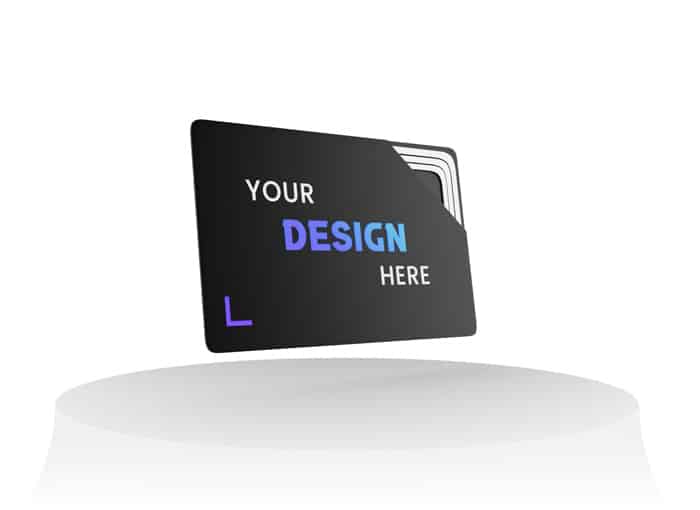
What are the 5 mistakes you shouldn’t make as a salesperson during a business meeting?

Every event can be an opportunity to network, by promoting your services or the products you sell to people who are interested or can put you in touch with the right contacts.
However, there are a few mistakes you should never make as a salesperson, if you want to make the most of these direct human contacts.
In this article, we’ll share 5 points to keep in mind that will help you succeed!
Mistake number 1: talking only about yourself!
This is a problem we still encounter all too frequently, especially among male and female salespeople.
Caught up in their enthusiasm and desire to sell, they talk only about their products, and all too often, only about themselves.
Moreover, some potential customers take advantage of this and skilfully encourage the salesperson to talk about their successes, their work and the organization of their days, the companies with which they have signed contracts…
For example, experienced sales managers, when they receive a salesperson, do their utmost to ensure that the atmosphere is relaxed and that the tone of the conversation is almost friendly, with the aim of defusing the introduction of negotiation techniques.
So, if you’re just starting out, you’d do well to keep a close eye on the subjects you’re talking about, so as not to stray too far from what you really want to share: when you’re communicating professionally, you need to know where to take your prospect and what steps to take in the dialogue.
If it’s your contact who “leads the way”, the likely result is that at the end of the conversation, he’ll walk away or take his leave, without really knowing what you could offer him, and above all, with the feeling of not having been listened to enough.
Mistake number 2: not establishing contact with the other person
In addition to mistake number 1, it’s important to establish good contact with your prospect as quickly as possible, otherwise there’s a risk that the person will cut off the discussion or leave quickly.
This involves mastering certain techniques, such as gesture synchronization, i.e. subtly reproducing one or more of your contact’s gestures or attitudes: behavioral psychology studies show that this increases mutual trust.
In the same way, repeat two or three particular words that your prospect frequently uses: this will give him or her the feeling of being accepted.
And if you rephrase a few of his phrases, he’ll really feel that he’s understood perfectly.
Finally, ask questions: that’s what sales is all about!
You need to know what problems your potential customer is facing, what solutions they’ve already adopted, or what they’d like to achieve. Only then can you talk about your services or products: don’t make the mistake of talking first.
To make a good sales contact, the first quality is to step aside to get to know your contact better.
Mistake number 3: failing to prepare for the interview
Never improvise, but always be in control of what you’re going to share with your interviewer.
To do this, you need to be fully aware of the services or products you offer, the prices, the conditions of implementation, any discounts you can offer…
But that’s not all!
You also need to know how to explain the benefits of the solutions you propose to your prospect.
That’s why you can’t discover everything on the day of the actual meeting, whether at a trade show, a professional forum or a sales event: everything has to be prepared in advance.
Don’t hesitate to rehearse two or three different dialogue scenarios with your colleagues: this will boost your self-confidence and, above all, help you prepare responses to any objections you may encounter.
It’s part of salesmanship to know how to respond even to an aggressive caller.
In this sense, learning to keep your cool is also an essential quality!
Mistake number 4: announcing a price proposal too quickly
Before quoting a price or providing an estimate, you need to be sure that your prospect is interested in your proposal: otherwise, you’ll have wasted most of your time…
Indeed, during a trade show or specialized meeting, a prospect is usually besieged by a variety of proposals.
At every stand, salespeople will try to convince him of the relevance of their proposal: to make the difference, he needs to feel confident and have the impression that the salesperson understands his problem perfectly, rather than trying to sell him something.
That’s why, once again, you shouldn’t hesitate to ask questions if everything isn’t absolutely clear to you: no one will ever reproach you for being genuinely interested in them!
Take your time, rephrase your potential customer’s answers to make sure you’ve understood what they want.
Only then can you start talking about pricing.
Of course, this is not the time to talk about trade discounts: see how your contact reacts to the value of your proposals.
Unless you’re a salesperson whose mission is to sell a “discount” price even before the product or service, you’ll achieve far more success by answering your customer’s problems precisely, rather than explaining all the advantages of your solution.
Mistake number 5: failing to follow up a prospect consistently after a meeting
An impromptu meeting with a potential customer during a trade show or scheduled meeting is always an excellent opportunity to develop your network.
In this sense, every time you talk to someone, there’s a potential business opportunity not to be missed.
So far, we’ve looked at four main mistakes you shouldn’t make as a salesperson.
But you still need to know how to manage the rest of the meeting.
That’s when you can make the difference.
For example, if you’ve promised to send your prospect a digital brochure that evening, do so: it’ll not only remind him of you, but also show him that he can trust you completely.
Similarly, if you’ve agreed to call back at a specific time, keep your word: you’ll have no trouble justifying the call, since it was scheduled, and you’ll come across as a professional with a real commitment.
Of course, in all cases, once you’ve spoken to a potential prospect, you should at least give him or her a business card, so that your name and face are not unknown to him or her, and so that he or she can keep a record of the exchange.
This will also make it easier for you to arrange a subsequent meeting or phone call a few days after the physical meeting, as you’ll simply have to refer to the business card you left behind.
We invite you to choose a card that sets you apart from other professionals, so that your contact’s memory is positively impacted.
And to be even more effective, you can opt for a digital business card, i.e. one equipped with an NFC chip and a QR code: all you need to do is be close to your prospect’s smartphone, and he or she will receive your full contact details and the documents you wish to pass on without error: it’s practical, effective and, above all, prevents the business card from being lost!
In conclusion, we’ve seen in this article that face-to-face meetings are still an essential means of developing your network and, consequently, increasing your sales when you’re a salesperson.
Nevertheless, it’s important not to make the five mistakes we’ve listed above, so as not to ruin your communication efforts.
Take the time to think them over and acquire the essential reflexes, both in terms of body language and the words to use when you meet someone you don’t know but who seems interested in your sales proposals: by doing so, you’ll inspire confidence and increase the chances that the potential customer will sign with you.
Written by Camille BODET
The digital business card is a real ally for professionals wishing to promote their business effectively and instantly. In the...Lire la suite
VKARD is an innovative and effective solution to help all professionals stand out from the crowd and reinforce their brand...Lire la suite
If you prepare properly for a job interview, you'll have every chance of winning over the recruiter and getting the...Lire la suite
LinkedIn is a world-renowned business platform, and for good reason! Thanks to its many networking options, LinkedIn is the tool...Lire la suite
Find out how Leexi AI optimizes the management of videoconferences and business calls, saving time and improving efficiency.
In the professional sphere, it's vital to know how to convey certain strong values in order to stand out and...Lire la suite
Mastering the art of conversation is a real asset! By mastering the subtle art of conversation, you'll be able to...Lire la suite
Are you taking part in a trade event and want to do everything you can to make a good impression?...Lire la suite
CRM (Customer Relationship Management) represents a genuine corporate strategy for managing business contacts. This popular tool for professionals is in...Lire la suite
At a time when the professional world is in a perpetual state of competition, we might wonder what place altruism,...Lire la suite















